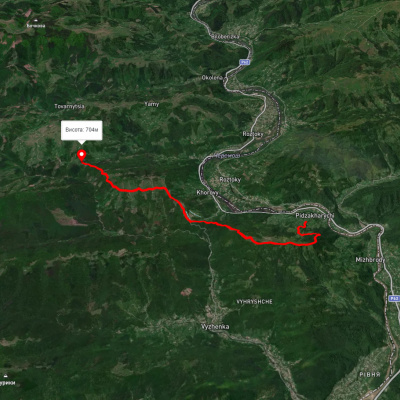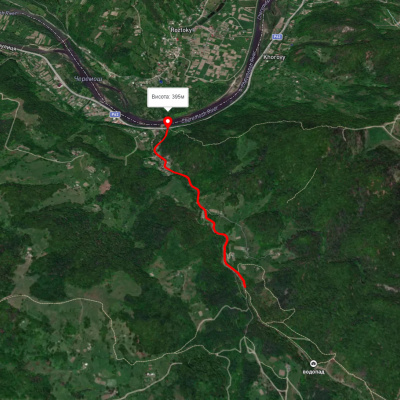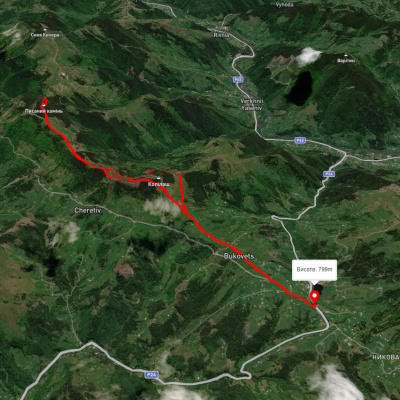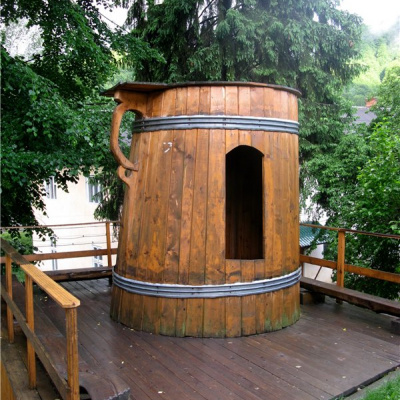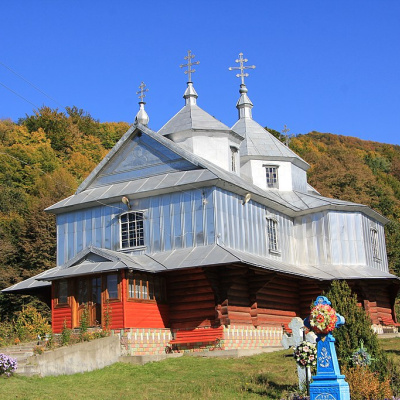Pidzakharychi
Pidzakharychi is a village in Ukraine, in the Chernivtsi region, Putyla district. The local self-government body is the Pidzakharychi village council. The population is 443 people.
It was founded in 1774. The territory on which the village was later founded was a part of Kyivan Rus, later - Galicia-Volyn state. In the Middle Ages it was part of the Moldavian principality. In 1775, the Habsburgs took Bukovyna from the weakened Ottoman Empire and until 1918 the village was part of the Austrian monarchy as part of the imperial province of Bukovyna.
On November 28, 1918, the village, like the entire Bukovyna region, was occupied by Romania. At the same time, during 1918-1939, the village was located in the border zone of Romania and Poland, the border ran along the Cheremosh River. Since 1940, it has been part of the Ukrainian SSR. Already in 1941, the Romanians, as allies of Germany, temporarily restored their occupation power in the village. Since 1944, the village has been part of Ukraine for good.
There is an interesting legend about the foundation of the village and its name. At a time when the Hutsul lands were alternately ruled by the Tatars and the Poles, who kept the locals busy, a man named Zakharii settled on top of a mountain that rises above the present-day village, not far from a mountain lake. Here he developed his own farm, kept horses, bulls, and sheep. One day, in broad daylight, the yard became dark, as if it were night, and a rainstorm with strong winds began. When Zacharias began to gather his livestock in a pile, he found that the best bull had disappeared. This happened every day. One day Zechariah came to the lake and saw that the water was red like blood. When his bull went to the lake to drink, a two-headed monster came out and grabbed the bull. Zacharias shot the beast with his rifle, but this time the monster managed to escape, flying over the mountains and hiding behind the Cheremosh.
The next time, Zacharias prepared thoroughly for the meeting with the monster by loading his guns with steel blades. On the third day of waiting, the monster appeared to attack Zachary. The rifle seemed to shoot at the beast and blinded it with fire. The wounded beast hung on a beech tree, and black blood dripped from its body. Zacharias took a sharp axe and cut off the monster's heads one by one. After that, the water in the lake became clear, the shores were covered with dense vegetation, and the human cattle never disappeared again. It is easy to guess that the Tatar hordes and the Polish gentry became the prototypes of the two-headed monster.
The inhabitants of this area saw Zacharias as a liberator and protector, and began to settle under the mountain where Zacharias lived. This is how the settlement emerged, which was first called Zakharchy, later Pidzakharych, and finally received the modern name Pidzakharychi.
Almost until the end of the twentieth century, before the construction of the road from Kuty to Roztok, the village's connection with the outside world in summer was through the Nimchych pass. In winter, Pidzakharychi remained cut off from civilization for almost six months. This contributed to the preservation of old folk traditions and local Hutsul flavor in the village. Almost all the villagers still wear embroidered shirts, colorful weddings are held here, and every house is actually a creative workshop or museum, and every family is a family art school. The residents of Pidzakharychi also have a sense of humor: they love to joke, like to cheer up with their own humorous stories and sayings, which is why the village has gained the fame of the "Hutsul Gabrov."
There are 5 museums of folk crafts in this small village, the most valuable of which is the museum of art works by the folk master, artist Ksenia Kolotylo. In the center of Pidzakharychi there is a museum of ethnography and local history of the Hutsul region, which presents antiquities, Easter eggs, embroidery, and carving.
Next to the museum, there is a peculiar wooden monument to a giant called "Garchyk" that has already become a symbol of the village. In the Hutsul region, a harchyk is a wooden vessel that resembles a huge mug used to store a fermented milk drink called guslyanka.
Since 2001, on the last weekend of September, Pidzakharychi has become a center of pilgrimage for connoisseurs of Hutsul traditions not only from the Bukovyna Hutsul region, but also from the entire Hutsul region of Ukraine and even Romania. Here, in the Museum of Ethnography and around the giant wooden garchyk, the annual ethnographic Hutsul festival-fair "Zakharetskyi Garchyk" takes place, a celebration of national culture, ethnic traditions and crafts. It is held to promote rural tourism, popularize the unique natural resources of the region and its historical and cultural heritage, revive and enhance Hutsul national customs, and search for young talent.
From morning to evening, the festival features traditional Hutsul music, numerous folklore groups demonstrate their skills, and festival guests try their hand at crafts, carving, and painting Easter eggs. The Hutsul Chichka contest ("chichka" means "flower" in the local dialect) is held among young Hutsul women, where young flowers compete for dignity, talent, wit and other qualities of a hostess.
At the festival, you can taste traditional Hutsul dishes: guslyanka, mamalyga, buy products of folk artists, try yourself as a carver or Easter egg painter. There are also master classes in traditional Hutsul art for festival guests.
Next to the museum and the giant "garky" is a crane well, and the path leading upwards will lead us to the Church of St. Basil. The wooden church and bell tower were built in 1876.
Its architecture is typically Hutsul: three towers on octagons, the nave is much wider than the chancel and the altar. Almost the entire church, except for the lower log cabins, is covered in shiny tin.
The church is located on a slope, and it offers a wonderful view of the village and the Cheremosh valley.
If you climb the mountain path to the top of the mountain that rises above Pidzakharychi, you will find a cave named after Oleksa Dovbush among the piles of huge limestone stones. Indeed, the legendary leader stayed in the surrounding settlements in 1741-1742 Dovbush: Vyzhnytsia, Putyla, Roztoky, Dovhopillia, and according to local legends, one of his places of residence was this cave. Romanian archives show that at that time the secretary of Potocki's Pokuttya estates appealed to the Moldovan lord Mavrokordat with a complaint that "the Pokuttya leader of the opryshky, Oleksa Dovbush, who is being persecuted by the Polish nobility, according to their exact data, has now gone to the Moldovan side for the winter to hide there." Starting in 1742, the neighboring village of Roztoky became the center of opryshky activity.
The entrance to the cave is located at an angle of 30-40 degrees on the northern part of the rocks, with an entrance height of up to 2.5 meters. Today the cave is 10 meters long, although according to legend it used to be 30 meters long. It is also said that in Dovbush's time it was connected to the Galician bank of the Cheremosh.
The cave can also be accessed from the direction of Vyzhenka, if you go up from the church of Ivan Suchavskyi along the Lyskovets stream to its source, and then follow the mountain path to the top of the mountain. In both cases, it is better to have a guide to get to the cave and explore it.
Які туристичні (пішохідні) маршрути проходять через/біля Pidzakharychi?
Пропонуємо пройти такі туристичні (пішохідні) маршрути через/біля Pidzakharychi: пер. Німчич - Протяте Каміння, Смугарські водоспади, с. Буковець – Писаний Камінь – с. Буковець, Писаний Камінь – с. Буковець, с. Космач, через г. Ротило, г. Грегіт, г. Біла Кобила до с.Буковець, Шешори - Росохата
